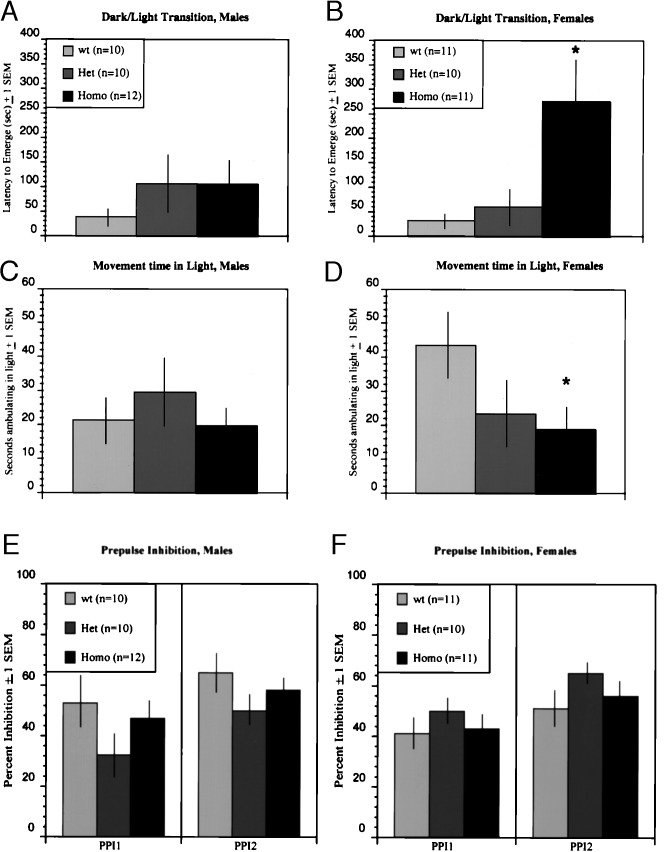Figure 4.
Effect of COMT gene disruption on emotionality and sensory gating. Homozygous females took longer to emerge into the light than did wild-type females (B), and they also spent less time ambulating in the light compartment (D). An ANOVA of genetype by latency to emerge was significant (2,29) = 6.056; P < 0.01 for females. Follow-up multiple comparison tests using the Bonferroni correction showed that female homozygous differed from both wild-type (P < 0.05) and heterozygous (P < 0.05) female mice, whereas the latter two groups did not differ from each other. A planned comparison of wild-type and homozygous females on total time spent in the lgiht was short of significant (not shown). However, planned comparison of wild-type and homozygous females on time spent ambulating in the light was significant [(20) = 2.12; P < 0.05], whereas the same comparison for ambulation in the dark was not (P = 0.56). Males did not differ on either measure of emotionality (A and C). Prepulse inhibition was examined for two prepulse dB levels; higher y-axos values represent greater percent inhibition. There were no effects of genetype for either males (E) or females (F) (∗, P < 0.05).

